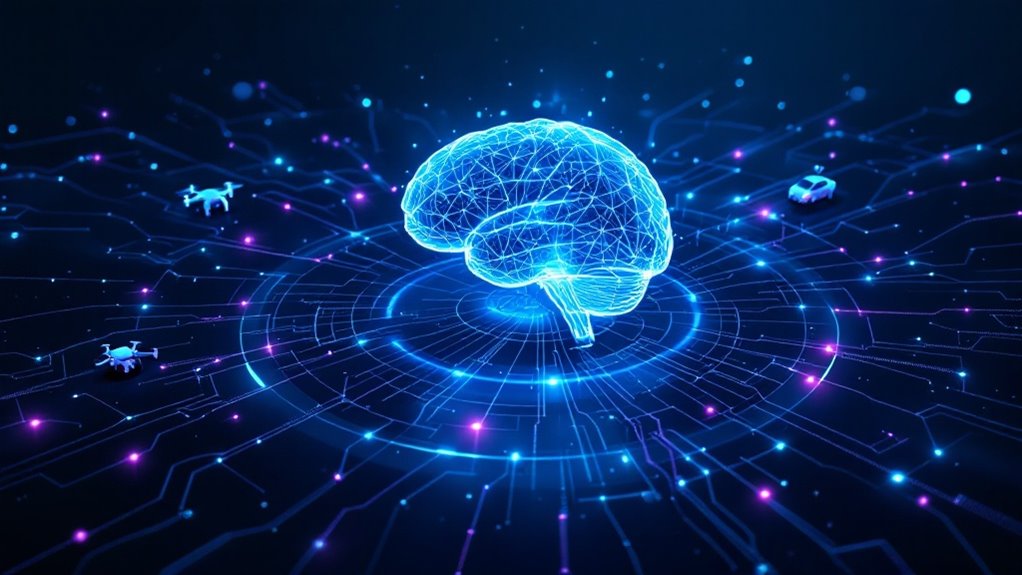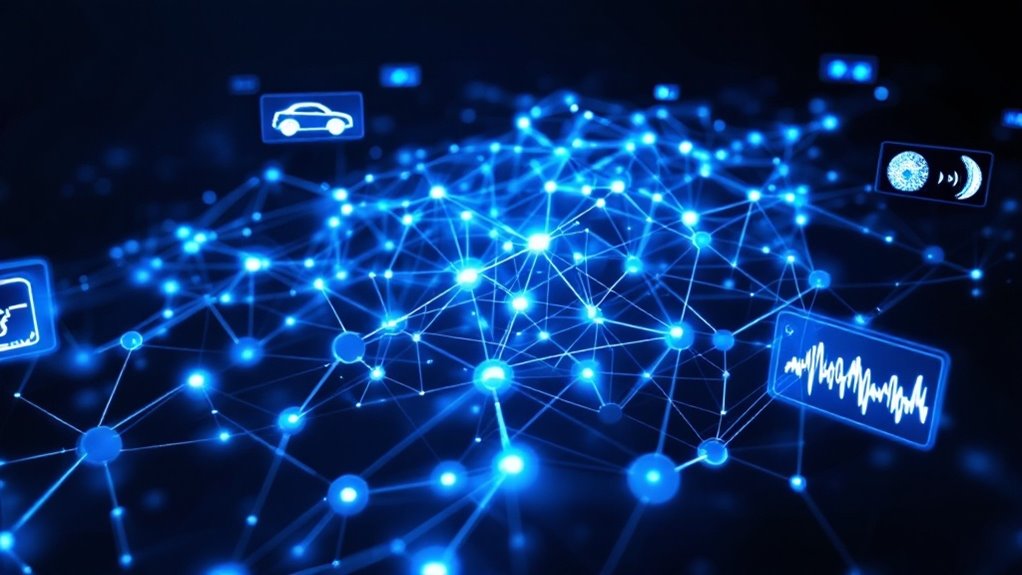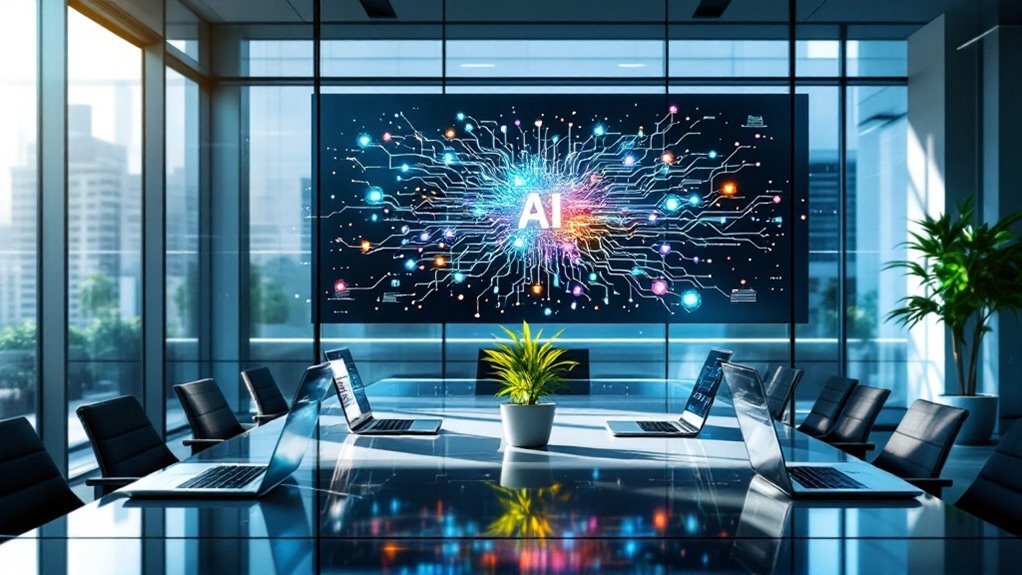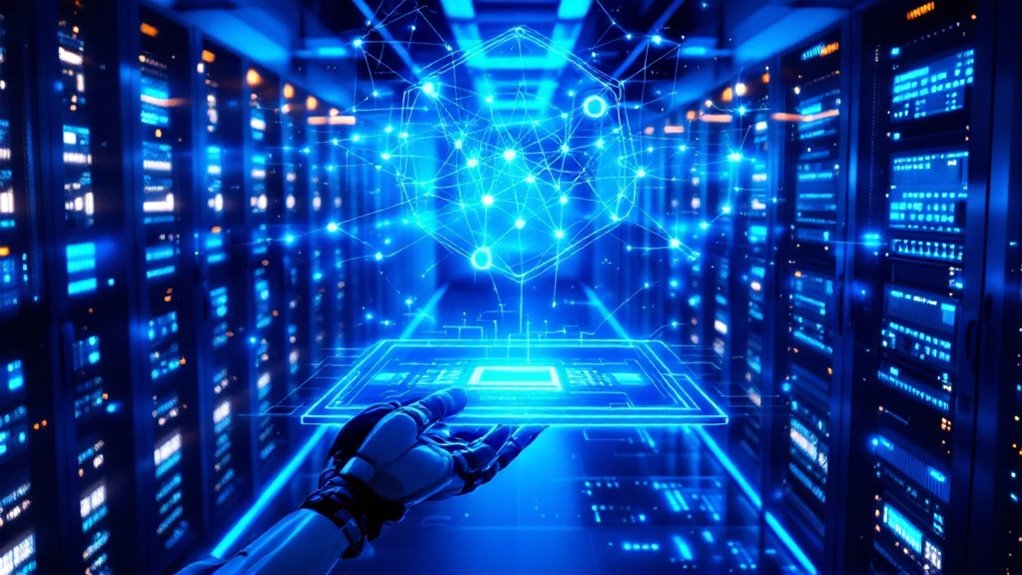Artificial intelligence is computer technology that mimics human thinking—learning, reasoning, and solving problems without someone explicitly coding every step. It’s the clever tech behind everything from Netflix suggestions to self-driving cars. AI combines machine learning, natural language processing, and computer vision to create systems that get smarter over time. Despite impressive capabilities, AI still struggles with context and can inherit biases from training data. Stick around to discover how this 70-year journey is just getting started.
The digital brains behind everything from your Netflix recommendations to self-driving cars, artificial intelligence has graduated from science fiction to science fact faster than you can say “robot uprising.” AI refers to computer systems that perform tasks typically requiring human intelligence—like learning, reasoning, and problem-solving—without explicit programming for each scenario.
At its core, AI leverages algorithms, data, and computational models to simulate human cognitive processes. These systems learn from experience, adapt to new inputs, and perform tasks autonomously. Think of AI as the overachieving student who not only memorizes the textbook but actually understands the material and can apply it to new situations.
Machine learning—AI’s star pupil—enables systems to improve through experience without being explicitly programmed for every scenario. This is how Spotify somehow knows you want to hear that embarrassing 80s power ballad before you even realize it yourself. Natural language processing lets your virtual assistant understand your mumbled request for tomorrow’s weather, while computer vision helps autonomous vehicles distinguish between a pedestrian and a mailbox (a critically important distinction, you’ll agree).
AI isn’t new; it’s been evolving for over 70 years. What began as rule-based systems has transformed into sophisticated neural networks that can recognize patterns humans might miss. The field combines insights from computer science, psychology, linguistics, and neuroscience—a true multidisciplinary brainiac. NASA adopts AI systems capable of operating without significant human oversight and continuously learning from experience.
Modern AI applications have achieved impressive capabilities, particularly in generative AI models that can create complex original content like text, images, and videos from simple prompts.
Despite impressive capabilities, AI still has limitations. Systems remain heavily dependent on their training data—garbage in, garbage out, as they say. Biases in data lead to biased outputs, and many AI systems struggle with context and nuance that humans grasp intuitively. It’s important to understand that AI encompasses multiple subsets, with deep learning representing the most complex neural network implementations for sophisticated pattern recognition.
The future of AI promises further integration across industries, from healthcare diagnostics to climate modeling. Researchers continue working toward general AI with flexible intelligence across domains, while simultaneously addressing ethical concerns and governance frameworks.
Like any powerful tool, AI’s impact will ultimately depend on how we choose to wield it—hopefully with more wisdom than characters in most sci-fi movies demonstrate.









